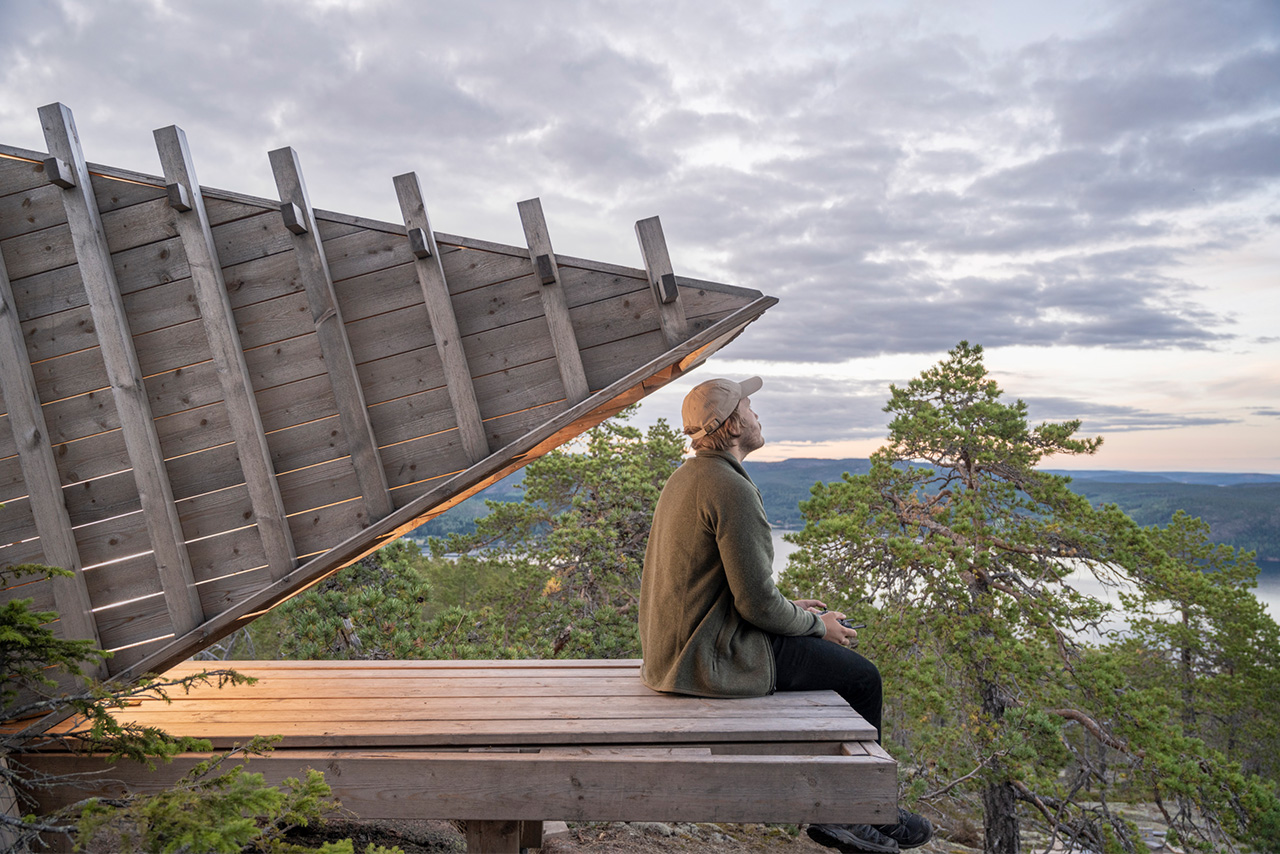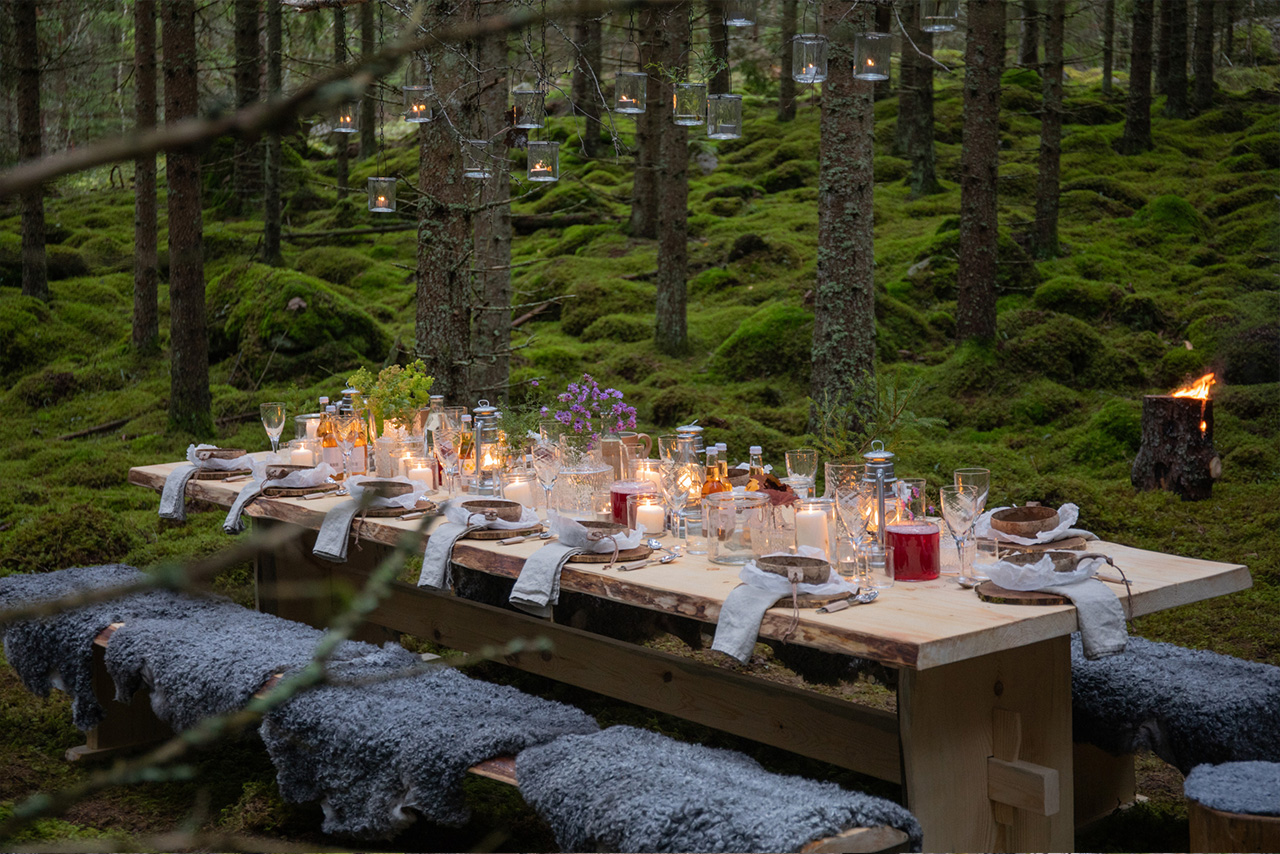
Double Dynamic Lighting - combining two worlds
Double Dynamic Lighting (DDL) is a lighting design concept for dynamic indoor lighting. In short, you adjust the electrical lighting in real time so that it complements daylight. This is to be able to create more motivating and engaging environments and increase well-being in indoor spaces. Meet professor Ellen Kathrine Hansen, one of the forces behind it.
Since 2017 the lighting technology and solution partners Tridonic, iGuzzini, Fagerhult and Zumtobel have teamed up with Aalborg University, Copenhagen, to develop and scientifically validate the ambitious Double Dynamic Lighting (DDL) concept. During these years, four studies has been Carried out at Aalborg University in Copenhagen, under the leading of Head of the Lighting Design Research Group professor Ellen Kathrine Hansen.
HOW TO EXPLAIN SOMETHING SIMPLE
Double Dynamic Lighting is, for some, not a new subject. But it was not an easy Task to define the concepts for the dynamics of the daylight and translate this into parameters that could be tested in lab and field tests and finally end up with a design guideline.
- In this case we had an idea that in a way is very basic, referring to a natural phenomenon, we all have a the variations in daylight we all desire – and yet the research process is something very complex, Hansen explains. We needed evidence on this basic level, to make a general concept that is research based and applicable in a broad manner. So we set up this basic, but also ambitious, target to see if we could define the qualities of the dynamic daylight, and translate it into general design parameters.
To be able to narrow it down to a research project, the group started by describing and defining – “What is it we talk about when we talk about the qualities of dynamic light?”.
I have a background in architecture, and a spacious understanding of lighting in space, Hansen elaborates. I have had the feeling for a long time, that we could do so much with dynamic and electrical lighting – to complement the qualities of the daylight. Some of the most important qualities of the daylight is the dynamics of the daylight, that is so difficult to grasp, and define – because it is endless in its variations. It is probably the design element that affects us the most.
A FOUR-LAYERED RESEARCH CAKE
The study was carried out in four different parts, that explored concepts such as “direct and diffused light”, “qualities from the daylight”, “flow of light”, “light modelling” and “light space”. When these components were in place, the group set up a small lab experiment in a working space built in Aalborg University. Test persons were submitted to four different settings with warm and/or cold light in diffused and direct lighting fixtures. The subjects in the study then filled out questionnaires with their perceived impressions from the different light settings.
̶ We wanted to investigate how people experienced this, Hansen describes. How do you feel and perceive the atmosphere in this space? Besides questionnaires and interviews we also defined words that the test persons could pick, to describe their feelings. I think, for me, it was very important to take our understanding of dynamic light back to this very fundamental understanding of human perception. How we perceive, and how this is based on a cultural heritage on how lighting appears in a space – based on daylight.
"There is a naturalness and connection to nature in light, but also a cultural heritage in understanding that lighting support the way we perceive and take in spaces."Ellen Kathrine Hansen, professor Aalborg University, Copenhagen.
THE DYNAMICS OF THE SKY
In the study a sky-scanner was used to regulate the lighting in the space, depending on the character of the outdoor lighting. This affected the colour temperature and the direct/diffused light in the test environment.
̶ When the character of the daylight is very overcast and non-dynamic we can compensate this, says Hansen. With this solution, you can compensate with the dynamics of the electrical lighting, having different variations that stimulates us from the daylight. When that is said, of course you can never ever make any lighting that is as good as the daylighting.
 "There is a naturalness and connection to nature in light, but also a cultural heritage in understanding that lighting support the way we perceive and take in spaces." Ellen Kathrine Hansen, professor Aalborg University, Copenhagen
"There is a naturalness and connection to nature in light, but also a cultural heritage in understanding that lighting support the way we perceive and take in spaces." Ellen Kathrine Hansen, professor Aalborg University, Copenhagen
AND THE RESULT?
The test persons in the study were exposed to cold and/or warm light, distributed with a direct and diffused light setting in a fixed office environment. In compared to static lighting, the dynamic lighting was described as having a higher visual comfort by the test persons. It was also perceived as pleasing, motivating and energizing.
Some of the testimonials describes the impact the dynamic daylight mix had on their work and perceived atmosphere:
“It feels like the daylight and the light in the room are blended together, in a way. So, the weather is like casted into the room, projected.”
“And then, at some point during the daytime, I don’t notice the lighting at all, and it feels very natural. It’s just there complementing the space and task.”
THE NEXT STEP
But where do we go from here?
̶ Our starting point in this study was to see the atmosphere in the space and how the lighting is perceived, says Hansen. We know that there are important neurological effects of daylight and lighting. Daylight has a naturalness and a connection to nature, but it also bears a cultural heritage. The way we build, understand the rhythm of the day and take in spaces – that is all depending on lighting. We wish to take this into a larger field study, to further develop our knowledge and the insights in this area.
Or as professor Hansen sums it up:
̶ We try to make two worlds meet, and make the design of lighting respond to one approach - that daylight and electrical lighting is complementing each other, connecting man and nature.
TEXT MARIA VÅRENIUS
FOTO ALEXANDER HALL, MARTIN EDSTRÖM
Relaterade nyheter

Omvänt mentorskap: ”Allt ledarskap handlar om människor”
Under det senaste halvåret har sexton ledare från bolag i Jönköpings län haft varsin mentor via programmet Omvänt Mentorskap. Det som gör det just »omvänt« är att mentorerna är yngre och i början av sina yrkeskarriärer medan adepterna är mer seniora. Kristoffer Emanuelsson, produktionschef på Fagerhult, och Maria Liljeqvist, enhetschef inom hemtjänst i Jönköpings kommun, är ett av mentorsparen. Hej Maria och Kristoffer! Nu är Omvänt mentorskap över, vad har ni haft fokus på i ert samarbete?Kristoffer: ”Vi har inte haft några specifika mål utan har reflekterat och pratat, och så har Maria kommit med inspel på hur jag kan tänka i min vardag.”Maria: ”Jag tycker vi har haft en tydlig tråd där vi utgått från Kristoffers frågeställningar och reflekterat kring dem.” Kristoffer, var det något särskilt som du ville lyfta – och som du tar med dig? ”Jag ville fokusera på hur jag kan engagera kollegor och vi landade i flera diskussioner kring feedback. Det är lätt att fastna i det klassiska »Bra jobbat!« men det kan behövas lite mer utvecklande kommunikation och det vill jag bli bättre på gentemot mina närmaste medarbetare.” Maria flikar in: ”Jag sa till Kristoffer; du får inte säga »Bra jobbat!« om du inte också utvecklar vad som gjordes bra. Det är så lätt att fastna där.” Omvänt mentorskap 1 Att bryta invanda mönster är kan vara en utmaning, hur har det känts att kliva utanför komfortzonen? Kristoffer: ”Redan vid anmälan så bestämde jag mig för att ge detta en verklig chans. Annars är det ju ingen idé! Jag tycker det är viktigt att poängtera att det till stor del hänger på ens egen inställning. Att man verkligen vill, och vågar vara lite obekväm. Vi har haft bra diskussioner och samtidigt väldigt roligt, och det är ju alltid viktigt.” Maria: ”Jag tycker Kristoffer har varit modig och vågat testa de metoder vi diskuterat. Det har gjort att vi hela tiden kommit vidare.” Maria, har du lärt dig något som du tar med dig – utöver din roll som mentor? Maria: ”Ja, absolut! Det är så tydligt, att även om vi jobbar i väldigt olika miljöer så handlar ledarskapet alltid om människor och individer, och hur vi leder dem. Det är en värdefull insikt. Dessutom har vi haft roligt, och jag har stärkts i min egen roll som ledare genom att ha en senior ledare som lyssnar, tar till sig och provar mina idéer och tankar om ledarskap.” Ni jobbar i vitt skilda branscher, har olika lång ledarerfarenhet och är nya bekantskaper för varandra – vad tar ni med er från det? Maria: ”Vi är ganska olika som personer, och det har varit intressant att reflektera kring det i olika scenarier och hur det påverkar ledarskapet. Vi har lärt oss mycket av varandra.” Kristoffer: ”Jag tycker det är viktigt att vara öppen med sina brister, och samtidigt våga tänka nytt. Och kanske lägga eventuella skillnader kring hur länge man har varit ledare eller ålder åt sidan – och fokusera på att själva samtalet ska bli bra. Maria har ställt en del tuffare frågor där jag känt mig lite obekväm, men det har fått mig att ifrågasätta gamla vanor och varför jag gör saker på ett visst sätt. Det har hon gjort väldigt bra.” Kristoffer, utifrån ditt perspektiv som adept – hur ser du på Omvänt mentorskap? ”Inledningsvis kändes det lite obekvämt, men jag tycker man ska ta chansen att söka. Jag kan verkligen rekommendera det. Att ha en mentor var intressant, och det omvända mentorskapet tycker jag var väldigt givande. Att ta sig tid för reflektion med någon som inte har koppling till min vardag öppnar för andra funderingar och frågor. Vi kommer absolut försöka hålla kontakten.”

